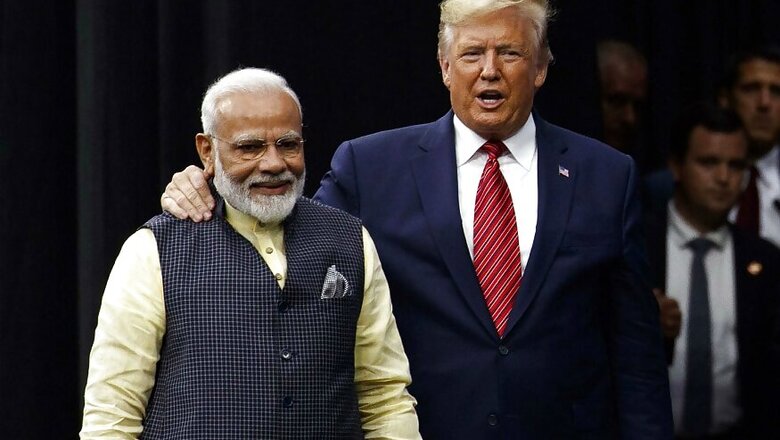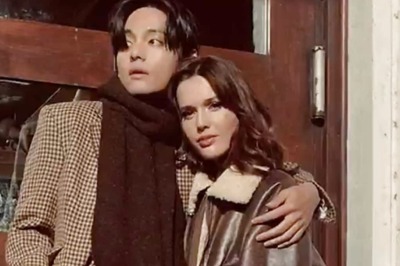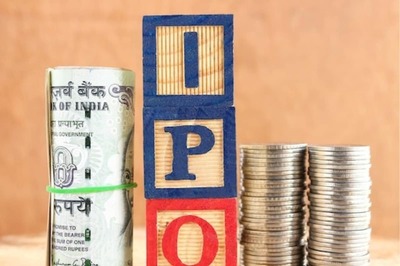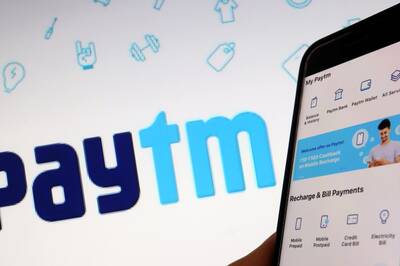
views
Millions stayed glued to television screen across the world as Prime Minister Narendra Modi and US President Donald Trump displayed their new-found bonhomie at the NRG Stadium in Houston on Sunday. Hailing the event as an “unprecedented, historic” moment, both leaders endorsed each other in a fashion never witnessed before – holding hands, showering praise at each other and a victory lap.
This new-found pitch of Indian-American relations has got the global media’s attention. The Washington Post in its coverage of the event noted how it “boasts” that the live audience of 50,000 persons will be the largest gathering for an invited foreign leader in the US.
Roger Cohen, New York Times columnist, termed the event a “party” on the eve of an election year, which Trump attended to endorse Modi’s Kashmir action.
“Kashmir illustrates how the Trump administration’s indifference to human rights issues offers carte blanche to leaders like Modi. American pushback has disappeared,” Cohen said. He, however, noted that although Modi and Trump are both “forceful, media-savvy politicians, “they are not alike”.
“I’d bet on Modi to transform India, all of it, including the newly integrated Kashmir region,” he added.
Modi defended his government’s move to revoke the special status of Jammu and Kashmir, while also firmly reiterating his strong stand against terrorism. He reminded that the perpetrators of the 9/11 attacks in the US and the 26/11 Mumbai attacks were both found in the same country.
His statement on terror emanating out of Pakistan came after the US President said he was committed to saving innocent lives from “radical Islamist terrorism”.
Brajesh Upadhyay, writing for the BBC, termed the Houston event a “win-win for both leaders”. “For President Trump, it was a chance to court Indian-Americans for the 2020 presidential election race where Texas could emerge as a battleground state. For Mr Modi, a PR triumph and picture with the president of the United States may help him shrug off the criticism over his recent strong-arm polices at home,” he said.
Perhaps, what the ‘Howdy, Modi’ event did was offer the Trump administration “the kind of crowd and energy” that Trump loves at his rallies, argued Upadhyay.
The Guardian in its coverage of the event made a similar observation, when it said that “the event had the feel of one of Trump’s campaign rallies”.
Brad Brooks of Reuters best described the event as: “Jubilant supporters dressed in everything from ornate saris to simple dhotis and even a few cowboy hats waved American and Indian flags, chanted “Modi! Modi!” and munched on concession stand snacks that included Indian staples of samosas and naan breads - along with nachos.”
Indeed, the two leaders of the world’s largest democracies share more than their political aspirations. “Both are known for brash styles, contempt for the news media and a predilection for 280-character missives to huge followings on Twitter,” wrote Courtney Subramanium of USA Today.
However, “much like Trump, Modi has made national security a primary focus,” she added, drawing in on their renewed thrust on ending “Islamic terrorism and illegal immigration”.
“He (Modi) casts himself as a protector, defending India’s borders from terrorists and enemies while his American counterpart employs similar rhetoric, railing against criminals and migrants ‘pouring into our country’ at the U.S.-Mexico border.”
Jacqueline Alemany of the Washington Post strongly added to their character sketches saying that “Trump and Modi, are in many ways, cut from the same cloth – right wing populist leaders that stir huge crowds with big personalities, who have faced for polarizing their country’s electorates.”
“It’s a big gamble for Trump to bet Modi’s popularity at home – and among diaspora communities abroad – will translate to support for trump,” she added.
Nevertheless, that human rights organisations counter-rallied around the NRC Stadium, aiming to raise awareness of the alleged human rights violations in Kashmir and Assam has not gone unnoticed.
Highlighting the other side of all fan fair, Laurin-Whitney Gottbrath of the Al-Jazeera, criticised “India’s Hindu nationalist government” for its actions. “Hindus in the world, Hindus in America are not awake to the horrors taking place. I do not believe that most of the Hindus that are supporting Modi really, truly, understand the extent to which the [Hindu nationalist] forces are aligned with fascism,” she quoted Sunita Viswanath, co-founder of Hindus for Human Rights, saying.
Among other interests, Modi and Trump invested much of the time speaking about US-India trade, which witnessed a slump in June after the US cancelled certain trading privileges allowing cheaper imports to India.
In the aftermath of ‘Howdy, Modi’, “a partial deal could include Washington reinstating India’s special tariff status in exchange for concessions related to access to Indian markets, possibly in dairy and medical devices. Other issues are thwarting efforts to sign a larger trade deal,” said the Guardian.




















Comments
0 comment